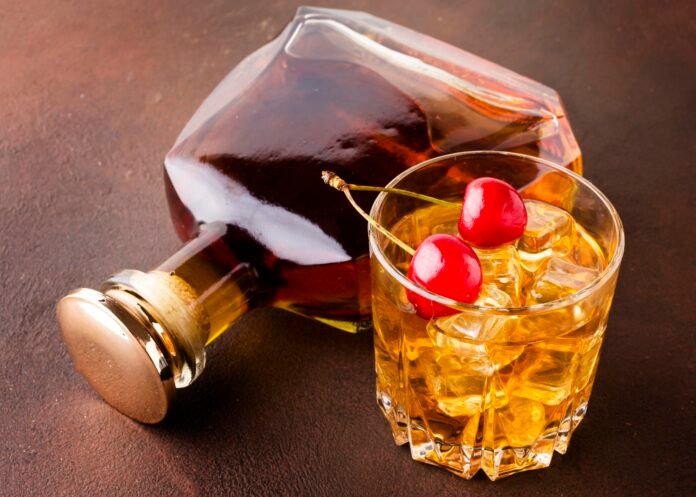Japanese whiskey has garnered a stellar reputation on the global stage, renowned for its meticulous craftsmanship, delicate balance, and distinct flavors.
The art of Japanese whiskey making is deeply rooted in both tradition and innovation, a harmonious blend that reflects the cultural essence of Japan itself.
This article delves into the unique techniques and traditions that define Japanese whiskey, highlighting what sets it apart from other spirits.
Origins and Philosophy
Japanese whiskey making began in the early 20th century, heavily influenced by Scottish methods but soon evolving its own identity.
The founding fathers, Masataka Taketsuru and Shinjiro Torii, established the cornerstones of the industry with Nikka and Suntory, respectively.
Taketsuru’s education in Scotland and subsequent return to Japan laid the groundwork for an industry that values precision and perfection.
Japanese whiskey is often described as embodying the spirit of kaizen—the philosophy of continuous improvement.
Ingredient Selection
The journey of Japanese whiskey begins with the selection of ingredients. High-quality barley, pristine water, and yeast are the foundational elements.
Japanese distilleries often source their barley from Scotland, but the water is local, drawn from Japan’s pure, natural springs.
The quality of water is critical as it significantly influences the final product’s taste and character.
Mashing and Fermentation
The mashing process involves mixing the ground barley with hot water to extract fermentable sugars. This mixture, known as mash, is then transferred to fermentation tanks.
Unlike some other whiskey producers, Japanese distilleries often use wooden fermentation tanks, which can add unique flavors and complexities to the whiskey.
The yeast used in fermentation is another crucial factor, with some distilleries employing proprietary strains to create distinctive flavor profiles.
Distillation
Distillation is where science meets art in whiskey production. Japanese whiskey typically undergoes double distillation in pot stills.
The shape and size of these stills, as well as the distillation process, are meticulously controlled to ensure consistency and quality.
Japanese distilleries are known for experimenting with different still shapes to influence the spirit’s character, a practice that underscores their commitment to innovation within tradition.
Aging and Maturation
One of the most critical phases in whiskey making is aging. Japanese whiskey is aged in a variety of casks, including American oak, sherry, and Mizunara oak.
Mizunara oak, native to Japan, imparts unique flavors such as sandalwood, coconut, and oriental spices, contributing to the whiskey’s distinctive character.
The aging process is carefully monitored, and the climate of Japan, with its hot summers and cold winters, plays a significant role in the maturation process, accelerating the interaction between the whiskey and the wood.
Blending
Blending is often considered the pinnacle of the whiskey maker’s art. In Japan, master blenders are revered for their ability to create harmony and balance in the final product.
They skillfully combine different aged whiskeys to achieve a nuanced and complex flavor profile. This process requires a deep understanding of how various elements interact and evolve over time, reflecting a blend of intuition and expertise.
Presentation and Enjoyment
The final stage of Japanese whiskey making is its presentation, which is an art in itself. From the elegant bottle designs to the ceremonial manner of serving, every detail is thoughtfully considered.
Traditional Japanese aesthetics, emphasizing simplicity and beauty, are evident in the packaging, making each bottle a work of art.
When it comes to enjoying Japanese whiskey, it is often appreciated neat or with a splash of water to open up the flavors.
In Japan, it is also popular to enjoy whiskey as a highball, mixed with soda water and ice—a refreshing way to savor its delicate notes.
Collaboration with Other Industries
Japanese whiskey makers often collaborate with other industries, such as the arts and design sectors, to create unique and aesthetically pleasing products.
Limited-edition bottles designed by renowned artists or collaborations with traditional Japanese craftspeople highlight the cultural and artistic integration within the whiskey industry.
Whiskey Festivals and Events
Japan hosts several whiskey festivals and events that celebrate the spirit and bring together enthusiasts from around the world. These festivals provide an opportunity to sample a wide range of whiskeys, learn from experts, and experience the rich culture surrounding Japanese whiskey. Such events play a significant role in promoting Japanese whiskey on the global stage.
Collectibility and Investment
Japanese whiskey has become highly collectible, with rare bottles fetching high prices at auctions. Limited editions, special releases, and whiskeys from closed distilleries are particularly sought after.
Collecting Japanese whiskey is not just about investment; it is also about appreciating the artistry and heritage encapsulated in each bottle.
Conclusion
The art of Japanese whiskey making is a testament to Japan’s dedication to quality, tradition, and innovation. Every step of the process is handled with care and precision, resulting in a spirit that is both refined and unique.
Whether you are a seasoned aficionado or a curious newcomer, Japanese whiskey offers a rich tapestry of flavors and experiences that reflect the artistry and cultural heritage of its makers.

